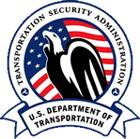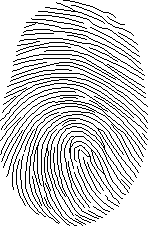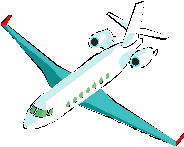 NATA is encouraging both members and non-members
subject to pending aviation security rules to begin the process of
fingerprinting their flight crews in anticipation of the April 1,
2003, deadline for compliance. Separately, the TSA released
guidance on the fingerprinting procedures for affected
operators.
NATA is encouraging both members and non-members
subject to pending aviation security rules to begin the process of
fingerprinting their flight crews in anticipation of the April 1,
2003, deadline for compliance. Separately, the TSA released
guidance on the fingerprinting procedures for affected
operators.
Under both the TSA's Twelve-Five and Private Charter security
regulations, commercial operators, including Part 135 on-demand air
taxis, are required to conduct FBI Criminal History Records Checks
(CHRCs) for each crew member of an aircraft subject to the new
rules. Presently, all of an operator's affected personnel must have
undergone a successful CHRC and be approved by the TSA prior to
conducting flight operations of specific aircraft on or after April
1, 2003.
 In response, NATA has developed, and the TSA has
approved, a detailed fingerprint collection program administered by
NATA Compliance Services (NATA/CS), a subsidiary of the
association. Both members and non-members of NATA may utilize this
service to complete the CHRC requirements.
In response, NATA has developed, and the TSA has
approved, a detailed fingerprint collection program administered by
NATA Compliance Services (NATA/CS), a subsidiary of the
association. Both members and non-members of NATA may utilize this
service to complete the CHRC requirements.
"Beginning April 1, all required flight crew members aboard
so-called 'Twelve-Five' aircraft must have been fingerprinted and
undergone a successful background check," commented Joseph E. (Jeb)
Burnside, NATA's vice president for government and industry
affairs. "Although the TSA has extended previous deadlines, it
appears the agency will finally have in place all the pieces
required to fully implement its new security rules in the very near
future. Consequently, we urge affected operators to begin their
compliance efforts as soon as they can to ensure they meet the
April 1 deadline," he added.
 The TSA rules, known as the "Twelve-Five" and the
"Private Charter" rules, address the security of non-scheduled
commercial aircraft operations. First proposed in February 2002,
the "Twelve-Five" rule requires commercial operators of aircraft
weighing 12,500 pounds or more to take specific steps enhancing the
security of their flights. Similarly, the TSA's "Private Charter"
rule addresses the security of aircraft weighing 100,309.3 pounds
(45,500 kg). One of the most time-consuming steps required is the
fingerprinting and background checks of their pilots and
co-pilots.
The TSA rules, known as the "Twelve-Five" and the
"Private Charter" rules, address the security of non-scheduled
commercial aircraft operations. First proposed in February 2002,
the "Twelve-Five" rule requires commercial operators of aircraft
weighing 12,500 pounds or more to take specific steps enhancing the
security of their flights. Similarly, the TSA's "Private Charter"
rule addresses the security of aircraft weighing 100,309.3 pounds
(45,500 kg). One of the most time-consuming steps required is the
fingerprinting and background checks of their pilots and
co-pilots.
According to NATA/CS's Michael Sonshine, the TSA-approved
process developed by the association's subsidiary is specifically
designed to address the needs of Part 135 on-demand air taxi
operators engaged in both passenger and cargo service with affected
aircraft. "While there are other ways in which operators may comply
with the fingerprinting and background check requirements, we have
worked closely with both the TSA and with operators to develop a
process that meets all parties' concerns as the April 1 deadline
approaches," he said.
According to Sonshine, the NATA/CS process includes the
following features not available from other collectors:
- NATA/CS's certified collectors, located at many FBOs around the
country, charge $35 to take fingerprints. This fee includes
overnight shipping and quality control to ensure proper chain of
custody. NATA/CS will also arrange for a "reprint" at no additional
charge in the event of a bad or "unclassifiable" print.
-
 NATA/CS has ensured that all the proper legal releases are
accurate and that the CHRC data will remain confidential yet
accessible to the employer or the TSA. These efforts help ensure
that no operator will be accused of violating any federal, state or
local human resources or privacy laws in attempting to comply with
the TSA regulations.
NATA/CS has ensured that all the proper legal releases are
accurate and that the CHRC data will remain confidential yet
accessible to the employer or the TSA. These efforts help ensure
that no operator will be accused of violating any federal, state or
local human resources or privacy laws in attempting to comply with
the TSA regulations.
- The NATA/CS process is designed to help operators save time and
money, with most background check results available within 24 hours
after fingerprints are received. Also, by locating fingerprint
collectors at major FBOs in the U.S., pilots can be fingerprinted
during a planned stopover instead of making a special trip at their
employer's expense.
- Much of the information needed by NATA/CS and the results of
the background checks are available on the NATA/CS Web site.
Operators may access the NATA/CS site, www.natacompliance.com,
for additional information. The NATA/CS staff is also available to
assist operators with further questions at 800-788-3210.
- The NATA/CS process is designed with customer service in mind
and includes such features as a "flat fee" for fingerprint
collection and processing as well as any "reprint" that may be
necessary. As an example, Sonshine noted that fees charged by other
collectors vary widely and that operators may incur substantial
costs for additional services.
"With the April 1 deadline fast approaching, hundreds of
affected operators can be expected to submit fingerprint and
background check requests for literally thousands of their pilots,"
said Sonshine.
 ANN FAQ: Contributing To Aero-TV
ANN FAQ: Contributing To Aero-TV Aero-News: Quote of the Day (12.10.25)
Aero-News: Quote of the Day (12.10.25) ANN's Daily Aero-Term (12.10.25): North Atlantic High Level Airspace (NAT HLA)
ANN's Daily Aero-Term (12.10.25): North Atlantic High Level Airspace (NAT HLA) Airborne 12.08.25: Samaritans Purse Hijack, FAA Med Relief, China Rocket Fail
Airborne 12.08.25: Samaritans Purse Hijack, FAA Med Relief, China Rocket Fail Airborne-Flight Training 12.04.25: Ldg Fee Danger, Av Mental Health, PC-7 MKX
Airborne-Flight Training 12.04.25: Ldg Fee Danger, Av Mental Health, PC-7 MKX






